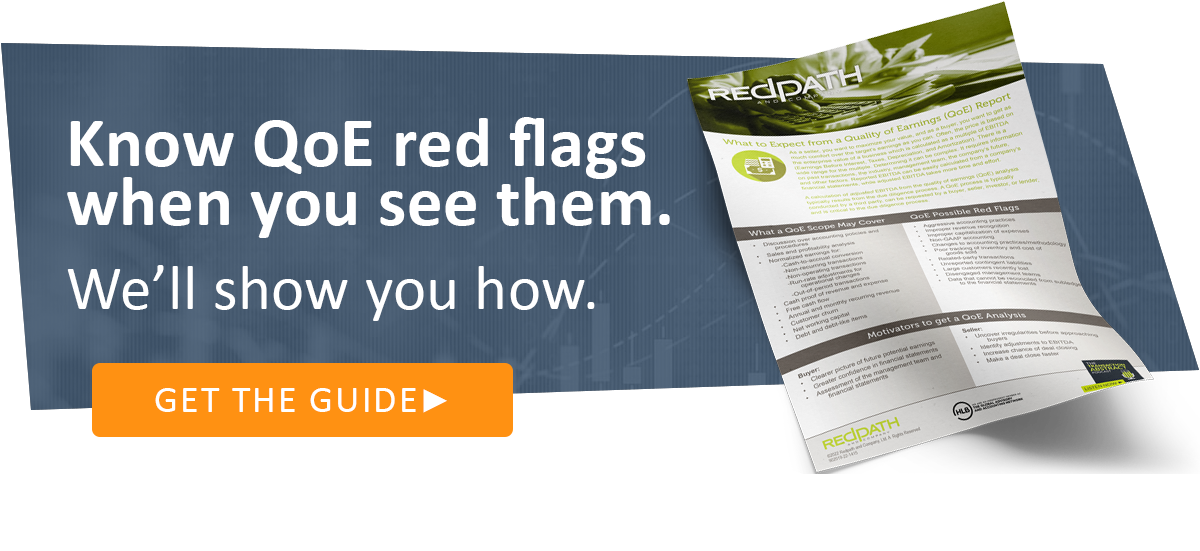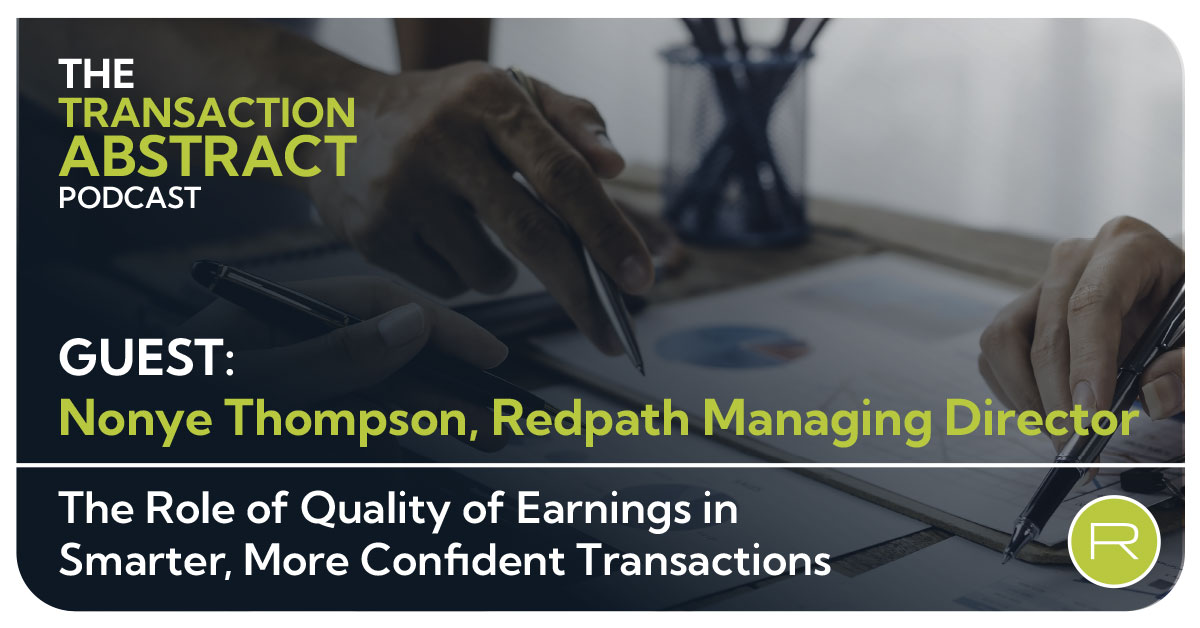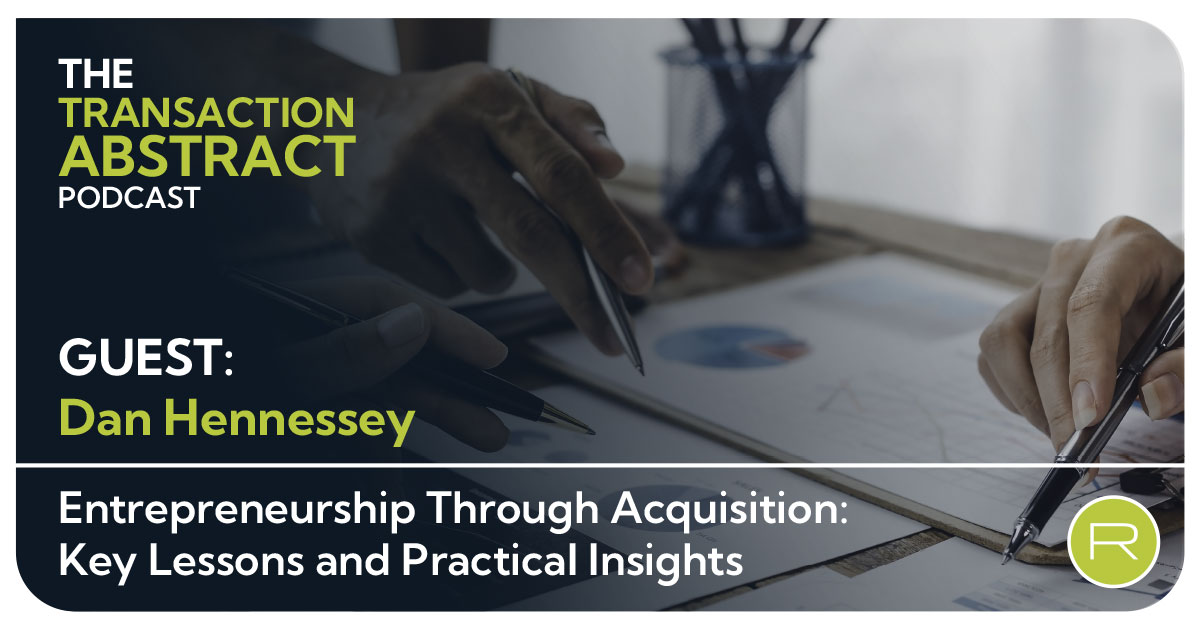The Role of Quality of Earnings in Smarter, More Confident Transactions
In this episode of The Transaction Abstract Podcast, Joe Hellman sits down with Nonye Thompson, Managing Director in Redpath’s Transaction Advisory...

A merger or acquisition typically needs some form of specialized bank financing, as funding an M&A deal is unique and complex in many ways. What should sellers and buyers understand about the lending process? Joe Hellman invited Doug Pudvah to join him on The Transaction Abstract podcast to get his perspective on commercial lending in today’s M&A environment. Pudvah speaks based on his lengthy experience in business finance, including M&A transactions.
Pudvah is the Managing Director and Minnesota Market Leader for CIBC (Canadian Imperial Bank of Commerce). His team provides full-spectrum commercial banking services to middle-market companies in Minnesota and the Dakotas.
Most everyone is familiar with retail banking which focuses on individual consumers for things like checking accounts. Commercial banking provides a full range of banking and financing services to businesses and commercial enterprises—“From the local coffee shop all the way up to the three ends of the world,” says Pudvah. A company may approach a commercial bank for a loan to purchase inventory or equipment (or perhaps acquire a new company). However, loans are usually different in the M&A marketplace. Traditional lending that consumers are most familiar with is asset-based, using collateral (inventory or other balance sheet assets) to secure the loan. Instead of an asset-based loan, an M&A acquisition could rely on a cash flow loan.
“In the cash flow lending world,” says Pudvah, “You're not looking so much to assets as collateral, but rather the cash flow that the company generates…to repay the loan. We refer to that cash flow as EBITDA (earnings before interest, taxes, depreciation, and amortization). And then the bank will typically lend a multiple of that cash flow depending on the transaction and depending on the industry. It might be two times EBITDA, it might be three times EBITDA. So that's how we structure those commercial loans.”
Resource: Guide to Selling a Business
Interest rates were very low for several years. The M&A market got pretty “frothy,” says Pudvah, and multiples for buying companies got pretty high. Since March 2022, however, the Fed has steadily increased interest rates to help curb inflation. That effectively reduced purchase price multiples and, therefore, overall debt required to close an M&A deal. But it also means debt is more expensive now. That can affect a company’s cash flow and their ability to repay the loan.
As it now takes a little more cash flow to service higher interest rates, Pudvah says lenders are advising their clients to think more about rate protection options. Interest rate swaps, caps, or collars are all things that can help manage interest rate exposure.
How long it takes for a lender to get comfortable enough with a transaction to finance depends on many variables. Those might include the following:
Will it be a single bank deal or syndicated? If the commercial lender is big enough to fund the deal on their own (and is willing to do so), then they can control the timing of the process. However, often the primary lender will look to other banks to help underwrite the transaction, creating a syndicate. In this case, syndicate members pay their share of funds to the primary bank, which serves as the agent to manage the transaction so the borrower still has a single point of contact.
If everything is in place—audited financial statements, a quality of earnings report, perhaps a deal book, and other sources of prepared information—the decision to fund the M&A loan can be a fairly accelerated process, taking as little as two weeks. However, it is also important to ensure the parties involved in the process have the relationships to close the deal as you get to that stage.
Selling a company is often a once-in-a-lifetime transaction. And buyers (other than private equity firms) may also be new or inexperienced in the M&A process. Advanced preparation is crucial and that often starts with an advisor who specializes in M&A transactions and can help layout a roadmap for what will be required.

In this episode of The Transaction Abstract Podcast, Joe Hellman sits down with Nonye Thompson, Managing Director in Redpath’s Transaction Advisory...

In this episode of The Transaction Abstract Podcast, Joe Hellman sits down with Dan Hennessey, the newly appointed CEO of Sam Schwartz Pedestrian...
![Common Legal Pitfalls in M&A Transactions with Kim Lowe [PODCAST]](https://www.redpathcpas.com/hubfs/Podcast-Legal-Pitfalls-Kim-Lowe.jpg)
In this episode of The Transaction Abstract Podcast, Joe Hellman sits down with Kim Lowe, Partner at Avisen Legal, to discuss the most common legal...